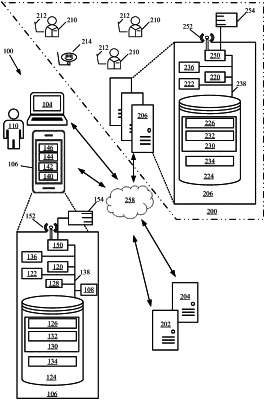| CPC G06F 18/2155 (2023.01) [G06F 18/23 (2023.01); G06F 18/24155 (2023.01); G06N 3/045 (2023.01); G06N 7/01 (2023.01)] | 20 Claims |

|
1. A system for labelling data to enable faster triggering of a secondary system to perform one or more actions at least by leveraging transformed data, data labelling, and the integral connection, the system comprising:
at least one non-transitory storage device; and
at least one processing device coupled to the at least one non-transitory storage device, wherein the at least one processing device is configured to:
receive data comprising unclean data and unvectorized data that is slow to process using a classification machine learning model;
transform the data; wherein transforming the data comprises cleaning and vectorising the data in order to improve the accessibility of the data so that an accessing classification machine learning model is able to process the transformed data more quickly than the accessing classification machine learning model is able to process the received data;
extract content from the transformed data;
process the content through a classification machine learning model;
receive a result from the classification machine learning model, wherein the result is a label for the data; and
based on the label data, trigger a secondary system to perform one or more actions, wherein the secondary system is integrally connected to the classification machine learning model thereby facilitating faster triggering of the secondary system at least by leveraging transformed data, data labelling, and the integral connection, and wherein the one or more actions performed by the secondary system comprise a downstream action.
|